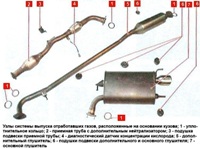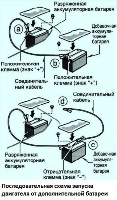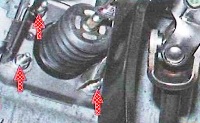Brake pedal height adjustment
Check and adjust the brake pedal height (fig. 1)
If the pedal is more than normal from the floor, the wheels may not release completely when the pedal is released (usually there is no free play on the pedal).
If the pedal is too low, there may be reduced brake performance due to reduced pedal travel
With the engine stopped, press the brake pedal 3-4 times so that there is no vacuum left in the vacuum brake booster
Release the pedal and measure the distance from the pedal pad to the floor in the free state.
This distance should be 130-139 mm on a car with an automatic transmission, 132-142 mm on a car with a manual transmission
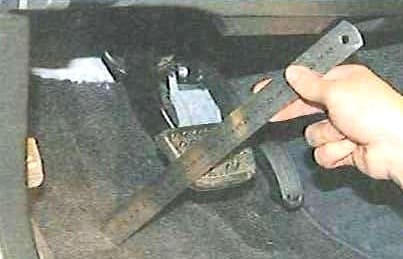
The ruler must be set perpendicular to the floor plane
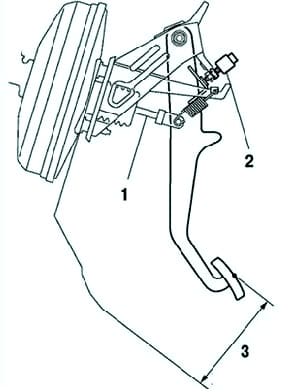
If the distance from the pedal pad to the floor is not as specified, then:
Disconnect the brake light switch connector.
Loosen the locknut and remove the brake light switch.
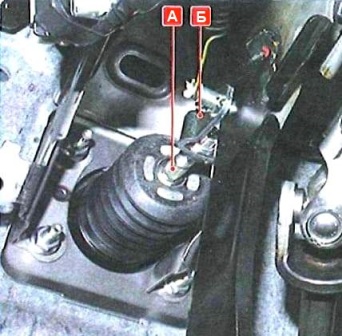
Loosen stem lock nut "B"
Adjust the height of the pedal by turning the stem "A" of the vacuum booster
Tighten the stem locknut. Tightening torque: 26 Nm.
Install the brake light switch and turn it until it makes light contact with the pedal travel stop.
Unscrew the brake light switch one turn.
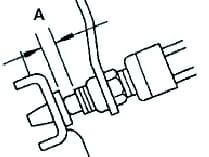
Check distance "A" between brake light switch and pedal limiter (fig. 4). Distance: 5–10 mm.
Tighten the brake light switch locknut.
Connect the brake light switch connector.
Check that the brake lights come on when the brake pedal is depressed and go out when the brake pedal is released.
After adjusting the pedal height, check the pedal free play.
If the distance "A" between the brake light switch and the brake pedal limiter has been adjusted correctly, the pedal free play will be in accordance with the specifications.
Checking the free play of the brake pedal
Stop the engine and press the pedal several times to eliminate the vacuum in the vacuum booster.
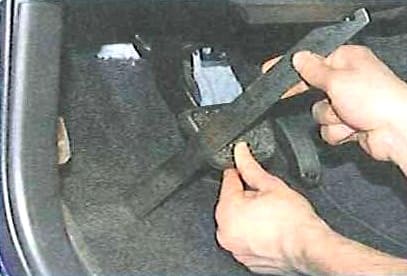
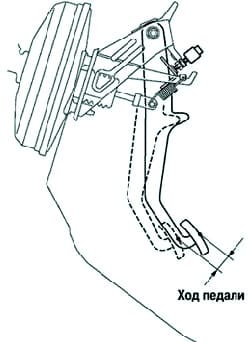
Depress the pedal until you feel resistance (fig. 5).
Pedal free play: 1-6mm
If the pedal free play is not as specified, check the distance "A" between the brake light switch and the brake pedal limiter.
If it matches the specifications, then check the brake system for faults.
Checking the brake pedal range
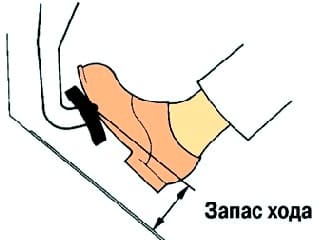
Release the parking brake lever.
With the engine running, depress the pedal and measure the pedal travel (fig. 6).
Reserve of the brake pedal travel from the floor covering at a pressing force of 490 N: more than 70 mm
If the brake pedal travel is not adequate Corresponds to the specified, find the malfunction of the brake system.
Checking the performance and tightness of the vacuum brake booster

Depress the brake pedal several times with the engine off and check that the pedal travel does not change (Fig. 7).
Press the brake pedal and start the engine.
If the brake pedal goes down smoothly, the vacuum booster is operational.
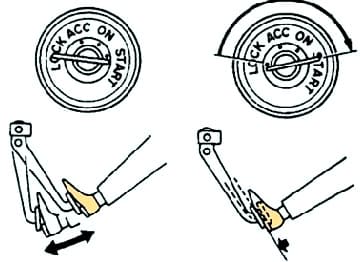
Start the engine and stop after one to two minutes of operation.
Slowly press the brake pedal several times (fig. 8).
If the pedal goes lower on the first press than on the second and third, the booster is sealed.
Depress the brake pedal while the engine is running and stop it with the pedal depressed.
If the distance between the floor and the depressed pedal does not change within thirty seconds, the vacuum booster is sealed
Checking the brake booster valve
Remove the clamp and disconnect the vacuum hose.
Remove the vacuum valve.
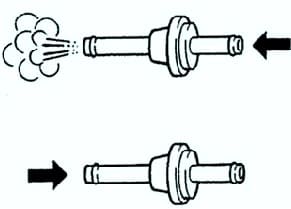
Blow out the valve and check if there is a free air outlet from the valve (Fig. 9).
If there is no free outlet, replace the valve







